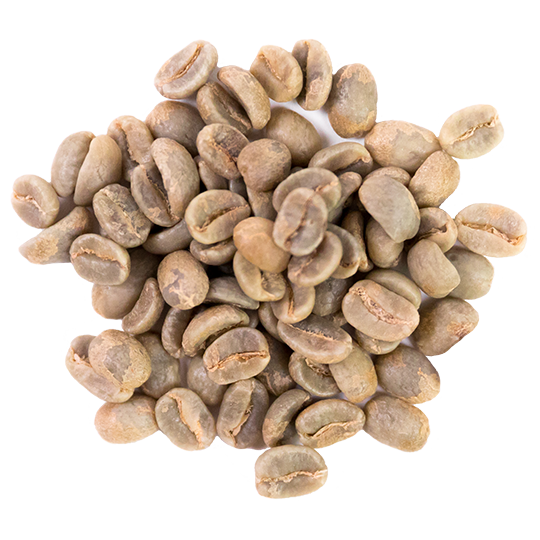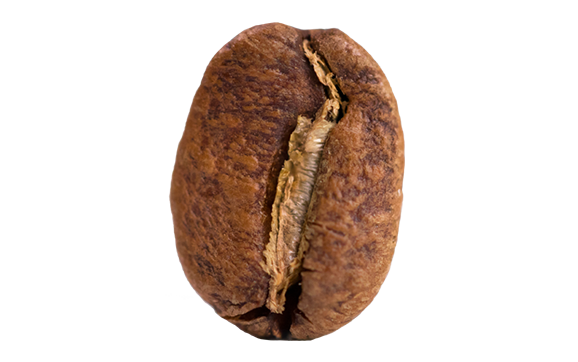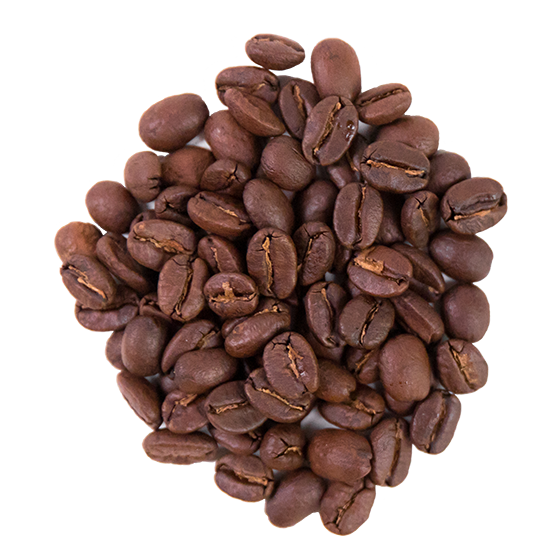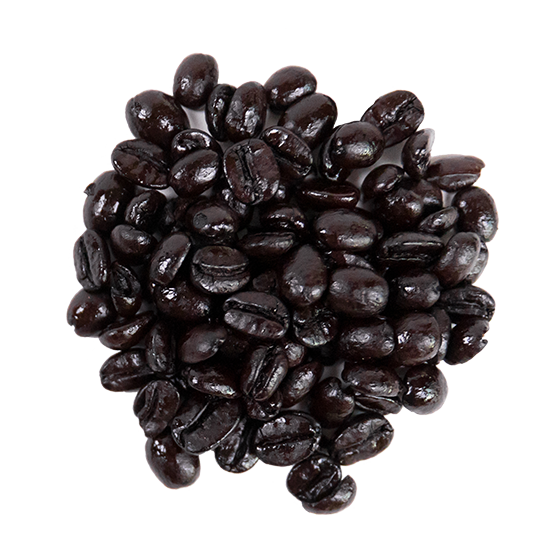Alchemy: The Roasting Process

Into The Drum
Green coffee beans are poured into a large, rotating drum. The drum is heated to 356°–464°F (180°–240°C) for 11–15 minutes, depending on the desired degree of roast—Starbucks® Blonde, Medium, or Dark.
For the first 5–6 minutes, the roaster acts like a dryer, driving moisture out of the beans. About 6 minutes in, a lot of moisture has evaporated, the green beans change to a yellowish shade and they smell like hay or buttered vegetables. At this stage, flavor development would be very immature—they would taste sour, without the characteristics we associate with coffee. In any case, the beans are still too dense at this point to be ground and brewed.

First Pop
The tumbling beans continue to lose moisture and darken, changing from a yellow shade (pictured on the left) to a tan-orange color (pictured on the right). Between 6 and 9 minutes, the “first pop” (or “first crack”) occurs. The beans puff up, doubling in size and making a crackling sound as they expand. This process is due to water turning to steam, very similar to what happens when corn pops. The center cut (the line running down the middle of the bean) has opened up as well. At the end of the first pop, the coffee beans are now light brown and smell like toasted grain or baked bread. This stage is referred to in the industry as “Cinnamon Roast,” with acidity being the most dominant taste characteristic.

City Roast
As more moisture is lost, the beans continue to darken. Their surfaces roughen slightly with darker lines beginning to appear. The coffee begins to smell “toasty” now as final aromatics start to form. Body and flavor are increasing and beginning to balance the acidity. This level of roast is known in the trade as “City Roast.”

Second Pop (Full City Roast)
Between 9 and 13 minutes, depending on the coffee and other variables, the beans will pop again. “Second pop” is caused by compounds being driven from the roasting beans—the force of these exiting gasses causes the beans to crack a second time. Smoke hovering above them is now a blue-gray haze and the beans’ surfaces are beginning to shine. Acidity, body, and flavor are coming into greater balance.

Dark Roast
After 13 minutes, the coffee’s temperature can reach or exceed 450°F (232°C), depending on the coffee. The pores are even larger, allowing oils to cover the beans’ surfaces. Acidity has diminished, and at the middle of this roast range, body and flavor dominate. However, as you continue to roast to our darkest profile, French Roast, the acidity, body, and flavors associated with origin are no longer present—what remains is a distinctive smoky flavor.

Many variables in the roasting process impact aroma, acidity, body, and flavor. The graphic above is a simplification but holds true for most of our coffees.
Starbucks® Blonde Roast coffees tend to be lighter in body and higher in acidity. As coffees are roasted longer, acidity softens and the body increases, creating more balanced flavors. Our medium roast coffees typically feature acidity and a body that falls closer to the middle of the range, neither high nor low. Coffees roasted even longer continue to be full-bodied, but with our darkest-roasted coffees, the body steeply drops off and acidity is diminished.








0 Comments